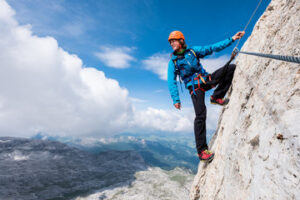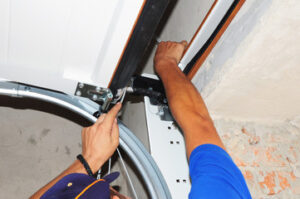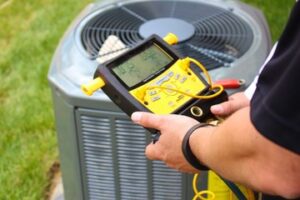Muscled climbers silhouetted against a steep rock wall are a common sight in climbing magazines and motivational posters. But unlike other sports where the biggest names compete at a distance, in climbing, the elite of the sport rub elbows with first-timers at the same gyms and crags as everyone else.

Alta Climbing is one of those sports that can seem incredibly intimidating to those new to it. Especially with the jargon and complicated equipment, it can seem like a world of unexplored possibilities. That’s why it is so important to take introductory classes through your gym or with a guide to get the fundamental skills you need before heading outdoors. It’s also essential to build up the proper strength and movement patterns to help ease you into more advanced climbing disciplines.
The first thing you’ll need is a good pair of climbing shoes. Most climbing gyms have a shoe rental system but if you plan to climb consistently it’s worth springing for your own. As you’re learning, though, there’s no need to go crazy with a pair of high-end shoes that have a fancy rubber or a ridiculous downturn. The most important part of a climbing shoe is the support they provide and the comfort they give to your feet.
You’ll also need a harness, belay device and a few different types of ropes depending on the type of climbing you’re going to do. It’s also important to practice breathing techniques to help you stay calm, focused and strong. Climbing is hard and will use muscles that lie dormant in your body so it’s important to not push yourself too hard – you can easily get pulled off the wall and seriously injured.
Indoor climbing usually involves two people, a person climbing the route (called the lead climber) and someone controlling the rope, called the belayer. The belayer is there to catch the climber in case they fall and lower them back to the ground when the climb is done. A belay check is done before the climber begins to make sure everything is set up correctly.
Outdoor climbing can be done solo and referred to as free soloing but the most common way is by using a rope, referred to as top roping. A single pitch route can be completed with one rope or a multi-pitch route requires multiple pitches, where the climber is belayed at each new anchor point.
Equipment
The sport of climbing involves utilizing a variety of equipment to protect the climber from falling. The vast majority of climbers use a rope and a belayer to protect themselves from the consequences of a fall. The belayer holds the end of a long line of rope, known as a belay rope, which is fed through a device, called a belay mechanism, attached to the climber’s harness. The belayer controls the rope to catch a falling climber and to allow the climber to descend if they become exhausted or injured.
The type of protection used depends on the type of climbing, including free or ropped, and the grade of a route. Climbers who choose to free climb use a series of removable hardware, known as “pro,” which they place into cracks and other features in rock formations in order to prevent falls.
Roped climbing involves two people: a climber and a belayer, who both must be skilled at their respective roles. The climber controls the rope to catch herself if she falls or wants to be lowered, while the belayer feeds the line through a belay device attached to the belayer’s harness. This belay system allows the climber to focus on her technique, without worrying about being lowered.
In addition to a belay system, a roped climber will wear a harness and carabiners. Climbers should always inspect their gear before and after each session to make sure all buckles are tightened and that the belay device is in good working condition. Those who practice bouldering, a largely rope-free form of climbing, should still check their clothing and footwear for loose or ill-fitting elements that could create a tripping hazard.
Many climbers fail not because of a lack of strength, but rather because they fail to properly sequence their moves through a climb. Sequencing is a proactive way of visualizing a climb and anticipating the movements that are required to send it. It is also important for a climber to have a solid understanding of the different types of aid.
Techniques
Climbing involves moving your body through a series of moves that require different muscle groups to perform. If you are a beginner, you will probably be using your arms for most of the climbing, while a more experienced climber may depend on legs and feet more, depending on the route. In either case, good technique is critical to safety and success.
One of the first things you learn in climbing is the use of footwork techniques like smearing, which means pressing as much of your shoe’s sticky rubber sole into the rock as possible to gain friction. You also learn how to flag, sticking one leg out on each side to balance your weight as you make wide reaches. Flagging can help prevent a common climbing error known as “barn dooring,” which occurs when your body swings back over the rock to a position below where you are hanging.
Another important skill in climbing is the ability to generate momentum. This is accomplished by maximizing the pushing forces of your legs and by not over-gripping (which will quickly cause epic forearm pumps). Generating momentum is an art form, but it can be learned through practice.
There are several different types of climbing techniques, including free climbing, aided climbing and lead climbing. Free climbing involves no rope at all and requires the climber to self-install protection in the rock (traditionalists) or rely on fixed bolts (sport climbers). Aided climbing uses a rope that is fed through a device called a belay to support the climber during ascent and to catch the fall if the climber falls. Lead climbing is more advanced than aided climbing and requires the climber to manage the rope themselves, clipping into quickdraws (special snap-gate clips attached to the rope) as they go up the wall.
Whether you are a novice or an experienced climber, you should always wear a helmet when you climb. Even the best-trained climbers can suffer head trauma from a bad fall, and a helmet will protect you if this happens. You should also make sure to check the weather before climbing, as poor conditions can make a hazardous situation even more dangerous.
Safety
Climbers often use a series of safety measures to protect themselves while they are on the wall. This includes wearing a helmet, using a belay system, and checking all the equipment. In addition, climbing centres also have a number of safety measures in place to ensure that climbers are safe. These measures include ensuring that the walls are free from tripping hazards, such as loose ropes and other climbers on the ground.
In general, the most common accidents in climbing occur due to miscommunication or incorrect belay technique. This can lead to falls, which can be very dangerous for both the climber and the belayer. One of the best ways to prevent these accidents is for climbers and belayers to communicate clearly using standard climbing commands. These are short phrases like “On belay?” (to indicate that the belayer is ready), “Climbing” (to signal when the climber starts), and “Take” (to ask the belayer to take up slack).
Another important step in climbing safety is having good body movement. This is especially important for beginners, who may be less familiar with how their bodies should move during a climb. In order to improve their movement, it is a good idea for climbers to warm up and cool down before and after climbing. Warming up and cooling down can help to reduce muscle strains, pulls and injuries.
Finally, climbers should be aware of their surroundings and stay focused on their partners when they are climbing. They should never be distracted by other people or the surrounding environment. In addition, it is important to report any problems with the climbing wall or equipment to a member of staff.
It is also important for climbers to remember that they are always at the mercy of gravity. Gravity will cause the rock to erode over time, and it is a climber’s responsibility to avoid being under that eroded rock. This is why it is important for climbers to communicate well with their belayers and be prepared to fall. This is also why it is a good idea for climbers who are going to be climbing on a cliff or in the mountains to make a plan for self-rescue and to know how to respond in an emergency.

